
Sheng Shicai was a Chinese warlord who ruled Xinjiang from 1933 to 1944. Sheng's rise to power started with a coup d'état in 1933 when he was appointed the duban of Xinjiang. The Soviet era ended in 1942, when Sheng approached the Nationalist Chinese government, but still retained much power over the province. He was dismissed from this post in 1944 and named Minister of Agriculture and Forestry. Growing animosity against him led the government to dismiss him again and appoint him to a military post. At the end of the Chinese Civil War, Sheng fled mainland China to Taiwan with the rest of Kuomintang.

The Turkic Islamic Republic of East Turkestan (TIRET) was a breakaway Islamic republic centered on the city of Kashgar, located in the far west of China's Xinjiang Province. It is often described as the First East Turkestan Republic to differentiate it from the Second East Turkestan Republic (1944–1946), but "first" was never a part of its official name.

The East Turkestan Republic (ETR) was a short-lived satellite state of the Soviet Union in northern Xinjiang, which existed from 1944 to 1946. It is often described as the Second East Turkestan Republic to differentiate it from the First East Turkestan Republic (1933–1934), but "second" was never a part of its official name.

The Warlord Era was a period in the history of the Republic of China when control of the country was divided among former military cliques of the Beiyang Army and other regional factions from 1916 to 1928.

The Beiyang government was the internationally recognized government of the Republic of China between 1912 and 1928, based in Beijing. It was dominated by the generals of the Beiyang Army, giving it its name.

Jin Shuren was a Chinese Xinjiang clique warlord who served as Governor of Xinjiang between 1928 and 1933.
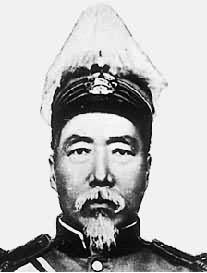
Yang Zengxin was the ruler of Xinjiang after the Xinhai Revolution in 1911 until his assassination in 1928.
The Ma clique or Ma family warlords is a collective name for a group of Hui warlords in Northwestern China who ruled the Chinese provinces of Qinghai, Gansu and Ningxia for 10 years from 1919 until 1928. Following the collapse of the Qing dynasty in 1912, the region came under Chinese Muslim warlord Ma Qi's control until the Northern Expedition by the Republic of China consolidated central control in 1928. There were three families in the Ma clique, each of them respectively controlled, parts of Gansu, Ningxia and Qinghai. The three most prominent members of the clique were Ma Bufang, Ma Hongkui, and Ma Hongbin, collectively known as the Xibei San Ma. Some contemporary accounts, such as Edgar Snow's, described the clique as the "Four Ma", adding Ma Bufang's brother Ma Buqing to the list of the top warlords. Other prominent Ma's included Ma Anliang, Ma Qi, Ma Lin, Ma Hu-shan, and Ma Zhongying.
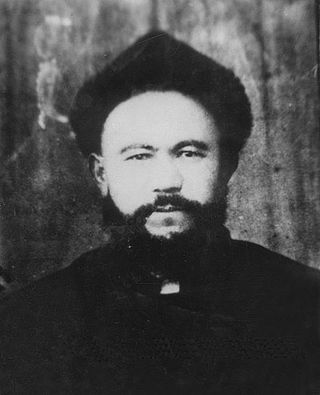
Sabit Damolla was a Uyghur independence movement leader who led the Hotan rebellion against the Xinjiang Province government of Jin Shuren and later the Uyghur leader Khoja Niyaz. He is widely known as the first and only prime minister of the short-lived Turkic Islamic Republic of East Turkestan from November 12, 1933, until the republic's defeat in May 1934.

Khoja Niyaz, also Khoja Niyaz Haji, was a Uyghur independence movement leader who led several rebellions in Xinjiang against the Kumul Khanate, the Chinese governor Jin Shuren and later the Hui warlord Ma Zhongying. He is best remembered as the first and only president of the short-lived Islamic Republic of Eastern Turkestan from November 1933 until the republic's defeat in 1934.
The Soviet invasion of Xinjiang was a military campaign of the Soviet Union in the Chinese northwestern region of Xinjiang in 1934. White Russian forces assisted the Soviet Red Army.
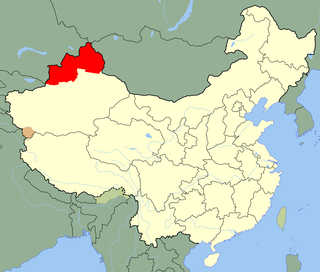
The Ili Rebellion was a separatist uprising by the Turkic peoples of northern Xinjiang against the Kuomintang government of the Republic of China, from 1944 to 1946. The Ili Rebellion began with the East Turkestan National Revolution, known in Chinese historiography as the Three Districts Revolution, which saw the establishment of the Second East Turkestan Republic. The leadership was dominated by Uyghurs but the population consisted mostly of Kazakhs.
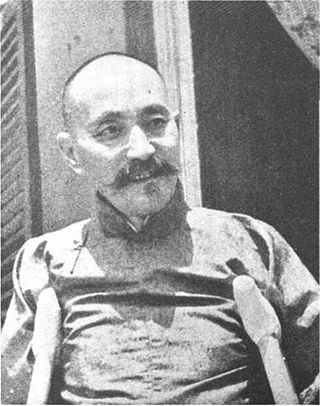
Ma Shaowu was a Hui born in Yunnan, in Qing Dynasty China. He was a member of the Xinjiang clique during the Republic of China.

Yulbars Khan, courtesy name Jingfu (景福), was a Uyghur chieftain and Kuomintang general during the Chinese Civil War. He entered the service in the Kumul Khanate of Muhammad Khan of Kumul and later his son Maksud Shah. He served as an advisor at the court, until when Maksud died in March 1930, governor Jin Shuren abolished the khanate. Yulbars then conspired with Khoja Niyaz and Ma Zhongying to overthrow Jin in the Kumul Rebellion. According to some people, Ma restrained Yulbars from traveling to Nanking to ask the Kuomintang for help, Ma earlier had an agreement with the Kuomintang that if he seized Xinjiang, he would be recognized by the Kuomintang as its leader.

The Kumul Rebellion was a rebellion of Kumulik Uyghurs from 1931 to 1934 who conspired with Hui Chinese Muslim General Ma Zhongying to overthrow Jin Shuren, governor of Xinjiang. The Kumul Uyghurs were loyalists of the Kumul Khanate and wanted to restore the heir to the Khanate and overthrow Jin. The Kuomintang wanted Jin removed because of his ties to the Soviet Union, so it approved of the operation while pretending to acknowledge Jin as governor. The rebellion then catapulted into large-scale fighting as Khotanlik Uyghur rebels in southern Xinjiang started a separate rebellion for independence in collusion with Kirghiz rebels. The various groups of rebels were not united. The main part of the war was waged by Ma Zhongying against the Xinjiang government. He was supported by Chiang Kai-shek, the Premier of China, who secretly agreed to let Ma seize Xinjiang.

Ma Zhongying, also Ma Chung-ying, nickname Commander Ga, was a Hui Chinese Muslim warlord during the Warlord era of China. His birth name was Ma Buying. Ma was a warlord of Gansu Province in China during the 1930s. His alliance with the Kuomintang (KMT) brought his predominantly Chinese Muslim troops under the control of the KMT as the New 36th Division with Ma Zhongying as its commander. He was ordered to overthrow Jin Shuren, the governor of Xinjiang. After several victories over provincial and White Russian forces, he attempted to expand his territory into southern Xinjiang by launching campaigns from his power base in Gansu, but was stopped by Xinjiang warlord Sheng Shicai with Soviet support in 1934.
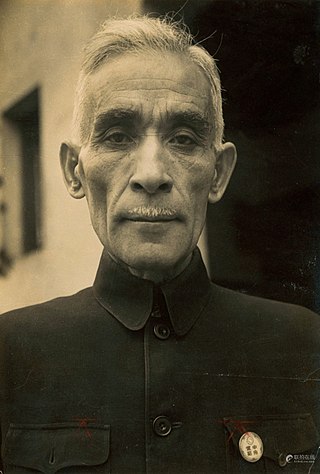
Masud Sabri, also known as Masʿūd Ṣabrī, was an ethnic Uyghur politician of the Republic of China who served as the governor of Xinjiang during the Ili Rebellion. He received education at Kulja and Istanbul and was a Pan-Turkist. Chiang Kai-shek appointed him the first Uyghur governor of Xinjiang.

Xinjiang Province or Sinkiang Province was a province of the Republic of China. First set up as a province in 1884 by the Qing dynasty, it was replaced in 1955 by the Xinjiang Uygur Autonomous Region of the People's Republic of China. The original provincial government was relocated to Taipei as the Sinkiang Provincial Government Office (新疆省政府辦事處) until its dissolution in 1992.
Tunganistan is an exonym for the territory in southern Xinjiang administered by the New 36th Division of the National Revolutionary Army from 1934 to 1937, amidst the Chinese Civil War in China proper. The New 36th Division consisted almost exclusively of Hui Muslim soldiers and was led by the Hui Muslim warlord Ma Hushan. At the time, the Hui were known as the "Tunganis" in Western literature, hence the name "Tunganistan".

















